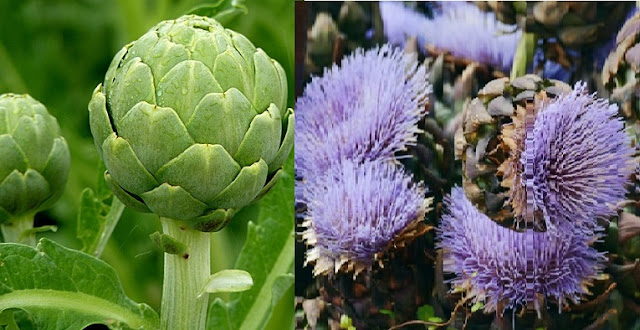Cultivation of Artichoke ; A complete Information Guide
Cultivation of Artichoke; A complete Information Guide
Introduction to Artichoke Crop ;
Artichoke (Cynara scolymus L.) is a herbaceous perennial crop that belongs to the family Compositae and it is grown for a flower bud. It is a native of North America, Southern Europe, and Canary Island. In India, it is grown in the form of an exotic vegetable. Artichoke considered the world’s oldest vegetable that is cultivated by the Romans and Greeks believed this vegetable also favorable to God also that is why it is also called “Vegetable of God’s”.
Nutritional Values of Artichoke ;
Artichokes have a low amount of fat with higher fiber contents and It is loaded with several vitamins and minerals like vitamin C, vitamin K, folate, phosphorus, and magnesium. They are also one of the richest sources of antioxidants. The nutritional value of Artichoke per 100 gms are as follows;
|
Nutrient |
Value |
Nutrient |
Value |
|
Energy |
211 Kcal |
Calcium |
21 mg |
|
Fat |
034 g |
sugar |
0.99 g |
|
Sodium |
296 mg |
Protein |
2.89 g |
|
Phosphorus |
73 mg |
calcium |
42 mg |
|
Potassium |
286 mg |
Vitamin C |
7.4 mg |
|
Carbohydrate |
11.39 g |
Vitamin B6 |
.081 mg |
|
fiber |
0.34 g |
Vitamin B3 |
1.11 mg |
Artichoke is most commonly used for indigestion (dyspepsia) and high levels of cholesterol or other fats (lipids) in the blood (hyperlipidemia). It is also used for high blood pressure, hepatitis C, irritable bowel syndrome (IBS), and many other conditions, but there is no good scientific evidence to support these uses.
In foods, artichoke leaves and extracts are used to flavor beverages. Cynarin and chlorogenic acid, which are chemicals found in artichoke, are sometimes used as sweeteners.
Don’t confuse artichoke with Jerusalem artichoke (Helianthus tuberosus).
Important Varieties of Artichokes;
Imperial Star ; (Open-pollinated, 85 days) is bred for annual production the first year from seed It produces 6-8 mature buds, each 3-4” (8-10 cm) in diameter. Plants are 3-4’ (1-1.2 meters) tall and as wide.
Climatic Requirement for Artichoke Cultivation ;
Soil & its Preparation for Artichoke Cultivation;
Propagation of Artichoke ;
It is generally propagated vegetatively to get true to the variety. The globe artichoke is propagated by means of suckers and offshoots from the old rootstock and Jerusalem artichoke is propagated by planting whole tuber or tuber pieces of 57 cm in size.
Manuring in Artichoke Crop;
The recommended fertilizer application rates are 48-56 kg nitrogen, 160-200 kg phosphoric acid, and 40 kg potassium per acre in autumn, with one or two, further split applications of nitrogen in the spring.
Aftercare in Artichoke Crop;
The soil should be frequently cultivated to check the growth of weeds and to keep the soil loose. Chemical herbicides may be used to control the weeds. Trifluralin, Linuron, Metobromuron, Metabenzthiazuron, etc. applied before planting gave good control of broad-leaved and grass weeds.
Harvesting of Artichoke Crop;
The buds of globe artichoke are harvested before they become loose and fibrous. The mature tubers of Jerusalem artichoke are harvested when they become mature. Harvest season starts from September – October. Sucker or offshoot planted crop is ready to harvest within 6-7 months after the planting. (whereas seed sown crop takes about 8 months). A native plant of artichoke produces 10-12 stems and approximately 45-50 edible buds.





